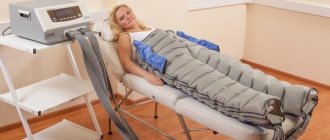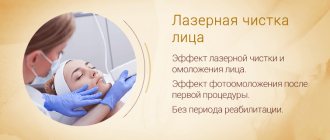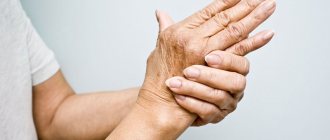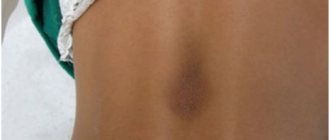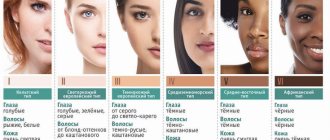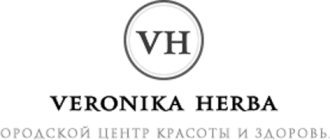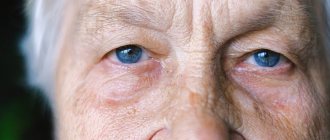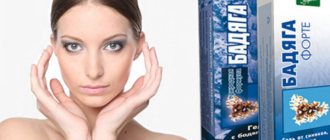Correction of post-traumatic pigmentation after aggressive laser procedures
Bragina Irina Yurievna, candidate of medical sciences, dermatologist, cosmetologist, physiotherapist, gerontologist.
Expert instructor of the European Laser Academy of Health LA&HA, vice-president of the Medical Laser Academy of Russia (MLAR), member of the American Society of Laser Medicine and Surgery (ASLMS), member of the Society of Aesthetic Medicine of Russia (OEM), specialist in the field of laser technologies and rehabilitation. Scientific director of the laser direction and curator of the Fotona brand of the SportMedImport Group of Companies. Post-inflammatory hyperpigmentation (PIH)
is the most common acquired pigmentation disorder. The prevalence and intensity of this aesthetic problem are associated with the cause, duration and intensity of inflammation preceding pigmentation.
Post-inflammatory hyperpigmentation is darkening of the skin that occurs after an inflammatory rash or skin trauma. This condition is the result of a response of melanocytes to skin damage, which causes an increase in melanin production and/or its redistribution.
Pathogenesis of PIH
Hyperpigmentation has the following development mechanism. Inflammatory processes in the dermis and epidermis lead to the release and oxidation of arachidonic acid with the formation of prostaglandins, leukotrienes, etc. These inflammatory factors damage the functioning of immune cells and melanocytes. Depending on the depth of the lesion, epidermal or dermal melanosis develops.
The epidermal form of post-inflammatory pigmentation is characterized by increased production and transport of melanin into surrounding keratinocytes. Clinically, the deposition of melanin granules results in darkening of the skin. The intradermal form of PIH results from inflammation-induced damage to basal keratinocytes, which secrete large amounts of melanin. The free pigment is phagocytosed in the upper dermis by macrophages, now called melanophages, and gives the skin a blue-gray appearance at the site of injury.
Other factors in the formation of PIH:
- the influence of UV radiation, which provokes tyrosinase-dependent melanogenesis. Melanomas are transferred to keratinocytes;
- genetics, taking medications, antibiotics. In these cases, melanostimulating hormone is released, which leads to increased sensitivity of the skin to UV;
- endocrinopathies, COCs (estrogen), pregnancy. The production of tyrosinase is activated, resulting in increased melanin synthesis.
Women are several times more likely to develop PIH than men. The role of the endocrine and immune systems in the development of post-traumatic pigmentation
The formation of PIH largely depends on the functioning of the immune and endocrine systems. Stress hormones play a significant role in the formation of post-traumatic pigmentation. Corticotropin stimulates the secretion of adrenocorticotropic hormone from the pituitary gland and cortisol. In addition, under its influence, hormones of the sympathetic nervous system are released from the nerve ganglia and nerve endings. Under stress, the concentration of androgenic hormones in the blood increases. Testosterone causes spasm of skin blood vessels in areas with a high content of receptors. There is a deterioration in local tissue reactivity. These processes, even with minor trauma or inflammation of the skin, can lead to chronic inflammation and the appearance of keloid scars.
Stress has a suppressive effect on the immune system, mainly due to an increase in the concentration of glucocorticoids. They inhibit the production of a number of pro-inflammatory cytokines (IL1, IL6, TNFa, etc.), reduce the number of circulating lymphocytes, macrophages and basophils, and with long-term exposure cause apoptosis of lymphocytes and thymic atrophy.
In depression, there is an excess secretion of cortisol in the adrenal cortex.
This hormone cannot affect the hypothalamus and pituitary gland and stop the production of stress hormones. The immune system turns out to be weakened, since for a long time all the body’s forces were thrown into overcoming a stressful situation, neglecting the interests of the immune system. The influence of hormones on processes in the skin
| Corticosteroids and pituitary adrenocorticotropic hormone | Inhibits the mitotic activity of fibroblasts, but accelerates their differentiation |
| Mineralocorticoids | Strengthen the inflammatory response, stimulate the development of all elements of connective tissue, accelerate epithelization |
| Somatotropic hormone of the pituitary gland | Enhances cell proliferation, collagen formation, granulation tissue formation |
| Thyroid hormones | Stimulates the metabolism of connective tissue cells and their proliferation, the development of granulation tissue, collagen formation and wound healing |
| Sex hormones (estrogens) | Lack of hormones slows down reparative processes |
| Sex hormones (androgens) | Activate fibroblast activity |
Hormonal imbalance leads to deterioration of microcirculation and a decrease in the skin's ability to regenerate.
Consequences of these processes:
- decreased elasticity of vascular walls and increased permeability. This prolongs the period of edema after the procedure;
- dysfunction of neurohumoral regulation, which causes persistent vasodilation. These processes lead to blood stasis;
- expansion of the capillaries of the superficial vascular network, which triggers the development of erythema, vascular mesh, telangiectasia;
- increasing the period of wound epithelization.
Prevention of PIH formation:
- Careful collection of anamnesis (and its recording in the patient’s chart)
- Avoidance of active work with high parameters in patients of phototypes III – IV
- Mandatory use of sunscreen after any procedures involving skin trauma
- Controlling the prescription of medications with photosensitizing properties
To prevent PIH, substances that perform the following functions are used:
- prevention of post-inflammatory hyperpigmentation (anti-inflammatory, antiseptic, astringent effect). Tranexamic acid and fern extract (Fernblok) are used;
- protection from UV radiation, which stimulates the development of pigmentation (sunscreens);
- antioxidant effect. It is provided by: fern extract (Fernblok),
- procyanidin (vitamin P, catechins);
- interference in the hormonal regulation of melanogenesis.
- The use of hardware technologies (LLLT, LED, MCT, UST) helps prevent post-inflammatory hyperpigmentation and also has an antioxidant effect on the skin.
Preparing to work with post-traumatic pigmentation
The preparatory period before PIH correction is especially important when working with patients at risk:
- smokers;
- patients in a state of hormonal, vitamin, microelement deficiency;
- persons experiencing chronic stress;
- patients with a symptom complex of microcirculation disorders (edema).
Objectives of the preparatory period:
1. Reducing the patient’s rehabilitation time:
- restoration of microcirculation;
- strengthening antioxidant status;
- control of inflammation.
2. Reducing the risk of side effects and complications after laser procedures:
- increasing immunity;
- improvement of microcirculation;
- increased antioxidant status;
- normalization of melanogenesis.
3. Increasing the efficiency of procedures:
- increase in the amount of “addressed” chromophore;
- reduction in the number of competitive chromophores;
- introduction of specialized sensitizers.
In the process of preparing for the correction of PIH, external agents, pharmacotherapy, physical factors, and injection methods are used. Their tasks:
- increased antioxidant status;
- activation of collagen synthetic function;
- decreased skin reactivity;
- prevention of pigmentation.
Patient management: choice of technologies taking into account the phase of the wound process Patient management at the acute stage
| Technology | AFT (warm and hot modes) | Peeling (warm and hot modes) |
| Wound process phase | Old phase |
| Objectives of the rehabilitation period | Control of the inflammatory process, formation of crusts, maintaining a moist environment in the wound, protection against infection |
| Form of medicine | Aerosols, sprays, gels, emulsions, balms, dressings |
| Means by mechanism of action | — Reparative and wound-healing drugs. - Painkillers. - Anti-inflammatory drugs. - Antiviral drugs. - Antioxidants. | — Reparative and wound-healing drugs. - Antiviral drugs. — Antibacterial drugs. - Anti-inflammatory drugs. - Antioxidants. |
Patient management at the acute stage of the wound process is carried out using open, closed and conditionally closed methods. When the wound surface becomes infected, the following drugs are used: Actovegin, Dioxyzol, Levosin, Levomekol, Mephenate, Acerbin, Olazol. The use of a low-intensity therapeutic infrared laser allows you to achieve the following results:
- reduction of intense swelling and tension in tissues;
- reducing the duration of inflammation phases;
- increasing the speed of blood flow and increasing the absorption of oxygen by tissues;
- decreased receptor sensitivity;
- an increase in the number of new vascular collaterals;
- activation of transport substances through the vascular wall;
- analgesia and inflammation relief;
- activation of blood microcirculation, increasing the level of trophic provision of tissues;
- stimulation of immunity and reparative processes;
- reflexogenic effect on the functional activity of various organs and systems;
- activation of cell metabolism, increasing their functional activity.
- Effects of using LILI
| DNA damage | Protein kinases involved in the formation of mRNA, as well as protein synthesis (RNA, DNA) are activated |
| Inflammation | The accumulation and release of ATP are activated. IL-6 mRNA levels decrease, modulation of PDGF, TGF-β, interleukins (IL-13 and IL-15, MMP), which are also associated with abnormal wound healing |
| Immunosuppression | There is an indirect effect on the cellular and humoral components of the immune system involved in antiviral reactions, and not a direct inactivating effect of the virus. Possible systemic inhibitory effect on delayed hypersensitivity reactions. Activation and proliferation of lymphocytes and macrophages, as well as the synthesis and expression of cytokines |
| Damage to the extracellular matrix | The increase in collagen production occurs due to an increasing effect on PDGF and fibroblast production, which occurs due to decreased apoptosis, increased vascular perfusion, bFGF and TGF-β. Decreasing IL-6 and increasing TIMPs, which in turn decrease MMPs, all help in reducing collagen degradation. Activation of ATP accumulation and release |
Management of a patient at the proliferative stage
| Requirements for the drug | AFL | Plane |
| Foam preparations, ointment forms |
Patient management at the reconstructive stage
| Requirements for the drug | AFL | Plane |
| Inflammatory phase | 3rd, remodeling phase |
| Form of medicine | Emulsions, creams |
| Objectives of the rehabilitation period | — High-quality restoration of the epidermis — Activation of metabolic and reparative processes in the dermis — Prevention of hyperpigmentation — Reduction of the severity of post-traumatic erythema — Restoration of TEWL |
| Means by mechanism of action | — Reparative — Antioxidant — Blocking melanin synthesis — Complex drugs |
Classification of pigmentation correction methods by mechanism of action:
- methods that reduce melanin production (depigmenting drugs, mesotherapy, oral agents);
- exfoliating procedures (peelings, microdermabrasion);
- those that destroy melanin (laser therapy, IPL (Intense Pulsed Light) therapy).
To lighten the skin and relieve inflammation, plant antioxidants and natural extracts are used.
Accelerating the exfoliation of keratinocytes with accumulated melanin is facilitated by the use of retinol, AHA acids, enzymatic peelings and ultrasound peeling. The main idea of these procedures is natural exfoliation of the skin without inflammation or suppression of this process. The role of photoprotection in the correction of post-traumatic pigmentation
To prevent the formation of pigmentation, patients must use sunscreen. Without the use of photoprotection, any procedures will have minimal effectiveness.
The following types of sunscreens are distinguished:
- chemical protection: Avobesin (UVA), Oxybenzone;
- physical protection: titanium dioxide, zinc oxide;
- combined protection (physical + chemical): Octyl methoxycinamate + zinc oxide, Parsol, Mexoril, Tinosorb S, M, Eusolex;
- natural filters: shea butter, caffeic acid, aloe, etc.;
- antioxidants;
- reparants (aloe, panthenol, hyaluronic acid).
To protect skin with post-traumatic pigmentation, sunscreens with a protection level of 30 or higher are suitable.
Patients are advised to avoid sunlight, as well as protect the skin with hats, clothing, and glasses. Depigmentation therapy: hardware methods
The use of laser technologies for the correction of PIH allows achieving clinical effects due to the absorption of light energy by skin chromophores. During the procedures, melanocytes are heated and damaged by thermal diffusion from heated melanosomes. The pigmented lesion darkens and peels off after 1-3 weeks.
Hardware technologies and features of their application
The use of Q-Switch lasers shows high efficiency in the treatment of PIH. They combine short (nanosecond) and ultrashort (picosecond) pulse durations. Features of picosecond lasers compared to nanosecond lasers are the impact on chromophores with a higher peak power and extremely short pulse duration. The duration of laser pulses for removing nanosized targets should be in the picosecond range. For this reason, picosecond laser processing allows for more efficient targeted energy transfer to significantly smaller chromophores. Picosecond pulses allow the use of lower fluences by enhancing the photoacoustic effect. This leads to a reduction in collateral damage due to less heating of surrounding tissues and less active formation of cavitation bubbles.
The absorption of a huge amount of energy in a short period of time leads to the implementation of a predominantly photoacoustic effect. The target "explodes" with the formation of many tiny "debris". In the case of using nanosecond lasers, results are also achieved mainly due to the photoacoustic effect. In this case, the energy of the target is transmitted over a longer period of time, due to which it is crushed into large fragments. Around the destroyed target chromophore in the epidermis or dermis, high-intensity zones of microdestruction are formed, caused by the impact of a “blast wave”. It is assumed that these areas of microtrauma are a trigger for the launch of remodeling processes in the dermal layer and the production of new collagen, mucin and elastin. These processes improve the condition of wrinkles and atrophic scars.
Fotona's StarWalker technology combines the high-energy capabilities of nanosecond lasers with the ultra-short pulse peak powers of traditional picosecond lasers. This combination allows you to influence a larger number of particles of different sizes than pico and nano separately. This feature increases the effectiveness of action on target tissues.
StarWalker's unique TMD (transverse mode) laser oscillator technology, combined with ASP pulse control, delivers very short (5 nsec) Q-switching pulses, consisting of a high-energy stream of ultra-short pulses of energy, in trillionths of a second.
This provides a photomechanical effect to break up tiny skin objects without damaging surrounding skin. When using this device, handpieces with both full and fractional beams are used. High-energy capabilities of nanosecond lasers with ultrashort pulses peak powers of traditional picosecond lasers
When choosing the wavelength, they are guided by the principle of subcellular selective photothermolysis. In accordance with this principle, it is necessary to use high peak power and ultrashort pulse duration [5 ns]. This causes only the melanin in the target cell to be destroyed and leaves the cell alive. This technology is radically different from traditional treatment methods. They were based on the principle of selective photothermolysis, which leads to the destruction and death of pigment-containing cells.
The choice of laser radiation wavelength depends on the depth of melanin.
| Melanin depth | Clinical features |
| Epidermal | melanin in the basal and suprabasal layers of the epidermis; clear boundaries; light or dark brown color; Wood's lamp has clear contrast; responds well to treatment |
| Dermal | melanin granules in the dermis; unclear boundaries; gray-blue tint; in Wood's lamp the boundaries are not obvious; difficult to treat |
| Mixed | most common type; a combination of blue, light brown and dark spots; mixed painting in Wood's lamp; highly variable treatments |
StarWalker technology allows you to work with all possible wavelengths to correct post-traumatic pigmentation.
Advantages of StarWalker non-ablative Qs lasers:
- the ability to perform mild procedures that do not require anesthesia;
- very short skin recovery time;
- no side effects.
Fractional handpieces used:
FS20A (Nd:YAG);
- “spot” size: 10 x 10 mm;
- pixel size: 200 µm;
number of pixels: 81 (9 x 9 pixels). FS50 (KTP):
- “spot” size: 10 x 10 mm;
- pixel size: 200 µm;
- number of pixels: 25 (5 x 5 pixels).
FS50B (KTP):
- “spot” size: 5 x 5 mm;
- pixel size: 200 µm;
- number of pixels: 25 (5 x 5 pixels).
Principles of application of Q-Switch lasers
| Q-Switched Lasers (QSwitch) | Depth of exposure in accordance with the level of pigment occurrence | Special indications for use (types of hyperpigmentation) | Notes |
| KTP Nd:Yag laser 532 nm (frequency doubled neodymium (Nd:YAG) laser with wavelength 532 nm) | Epidermal layer of skin to basement membrane | Epidermal pigmentation: epidermal melasma; “café au lait” spots; lentigo | Radiation with a wavelength of 532 nm is well absorbed by oxyhemoglobin. After the procedure, bruising and purpura may appear, which completely disappear after 1-2 weeks |
| Ruby laser 694 nm with QSW (light skin only) | Upper dermis | Epidermal, dermal pigmentation: chloasma; lentigo; café au lait spots | I-II PHOTOTYPE Oxyhemoglobin does not act as a competing chromophore; there is no purpura or bruising after irradiation |
| Alexandrite laser (755 nm) with QSW (for very fair skin) | Middle departments | Epidermal, dermal pigmentation: melasma; chloasma; lentigo; “café au lait” spots; nevus of Ota; Becker's nevus | I-II –III PHOTOTYPE |
| Neodymium Nd:Yag laser 1064 nm with QSW (for all skin phototypes) | Deep layers of the dermis | Epidermal, dermal pigmentation: melasma; chloasma; lentigo; “café au lait” spots; nevus of Ota; Becker's nevus | I-IV-VI PHOTOTYPE |
Combination therapy in the treatment of PIH
Combination therapy shows higher effectiveness in correcting PIH than single use of individual drugs. For the treatment of melasma, the most widely used formula is Kligman's formula (HQ 5%, tretinoin 0.1% and Dexamethasone 0.1%). The combination of azelaic acid with 0.05% tretinoin or 15-20% glycolic acid can lead to earlier and more pronounced skin lightening . Kojic acid 2% in combination with HQ 2% is superior to glycolic acid 10% and HQ 2%. Glycolic acid 10% plus HQ 4% in a vitamin C and E cream and sunscreen was effective in 75% of patients.
The new combination of HQ 4%, tretinoin 0.05% and fluocinolone acetonide 0.01% (Tri-Luma®) was effective in 77% of patients.
Measures to prevent the formation of PIH:
- selection of adequate operating parameters (processing of skin without overlap; competently selected coverage area; selection of parameters corresponding to the impact zone);
- taking into account the general condition of the patients;
- correct choice of anatomical zone.
Proper preparation for laser procedures, taking into account the individual condition of the patient’s skin, as well as the use of suitable operating parameters, can effectively eliminate PIH and prevent its formation.
How to get rid of stains left after abrasions?
Such spots always remain on the skin after abrasions, scratches, burns or pimples. They linger especially on your hands. Hands are constantly in the water or at work. Skin cells do not have time to renew themselves. And in winter, such dark spots are “preserved” especially well. If the spot just has color, but the skin is smooth and not convex, then products with regenerating properties will help. For information. Excessive pigmentation is the result of an excess of iron in the body. Places of old scars formed after abrasions, burns and scratches should not darken. If this happens, especially where the skin a priori does not tan (palms, armpits), you can safely go get checked. And it is necessary. It is quite difficult to find out in the early stages whether iron will pose a threat to health. And the consequences of excessively accumulated beneficial macronutrients can be very dangerous not only for beauty. There are indirect signs by which you can understand that you should “give up” on iron - https://www.moscow-faq.ru/all_q.... Excessive pigmentation is just such a sign.
You should not eat foods high in iron after 40 years of age. 40 years is the milestone after which the body of men and women actively accumulates iron in various organs and tissues. Women were a little luckier - due to monthly blood loss. To date, there are no safe ways to remove excess iron from the body, so it is better not to overdo it.
The first thing I would like to advise those who have spots that last a long time is to analyze their diet and body for the content of sulfur and biotin (vitamin B7 or H). Sulfur is considered a beauty mineral. With its deficiency, hair begins to break and lose its shine, and the skin fades and ages, the growth of new cells is inhibited, reproductive function decreases, diseases of the joints and skin develop, metabolic processes are disrupted - pigment metabolism, blood sugar levels, etc. Since biotin contains sulfur, it can rightfully be called a beauty vitamin. In addition, biotin helps deliver sulfur to the right places (transport). Sulfur (MSM) and biotin (vitamin H) can be purchased at pharmacies and sports nutrition stores.
Skin pigmentation. Skin pigment. “The question of the origin of the pigment, as well as its very nature, has not yet been completely resolved. It is considered a substance from the melanin group without iron, without fat, but with a rich content of SULFUR - meduniver com MedUniver
Keratin, which is an element of skin, hair and nail cells, also includes a lot of sulfur. Keratin is synthesized by the skin. Any abnormalities in the body (keratosis, age spots, lentigo, ichthyosis, warts, bad nails, alopecia, psoriasis and many others) may indicate disturbances in keratin synthesis. And sulfur and keratin are somehow connected.
What to do to look good at the right time - www.moscow-faq.ru/all_question/wayoflive/2014/September/63813/171230
What products can change skin pigmentation - https://www.moscow-faq.ru/all_q...
What is treated when a clove of garlic is swallowed whole - www.moscow-faq.ru/all_question/wayoflive/zdorove/2014/May/62065/167996
It’s a good idea to check your body for a fungal infection. Deep mycoses are difficult to treat, progress, and take away your health. May suffer: skin, hair, joints, internal organs, etc. - https://www.moscow-faq.ru/all_q...
Both folk remedies and pharmaceutical preparations will help fight stains after abrasions - whatever you like. Among the pharmaceutical ones: the famous Panthenol, Contractubex and Mederma, Rescue balm, castor oil, which very actively promotes the regeneration/restoration/renewal of the skin, as well as petroleum jelly, bergamot or citrus essential oil.
How to restore skin. There are many products whose action is aimed at renewing skin cells and regenerating them. Many products are universal and are suitable not only for restoring dry and rough skin, but also for burns, abrasions, wounds and stains left behind. The main thing is to choose your own product and use it regularly.
There is one effective remedy. It is used for various skin lesions. This tool was developed by Russian scientists (they say they are military). Gel Leoxazin. The pleasure costs about 100 rubles and is sold in pharmacies. Used for skin damage and to prevent dark spots and scars from subsequently forming. The same Leoxazin gel is used to treat bedsores in bedridden patients - it is so effective. The mechanism of action is based on improving the microcirculation of the vessels of the dermis by preventing early spasm of the arteries of the deep choroid plexus of the skin; weakening of pathological afferentation from affected areas resulting from ionizing radiation, burns of any etiology; acceleration of reparative processes in the wound; activation of the growth of granulations and epithelium. Antimicrobial activity is associated with delayed growth of microflora in the wound - https://www.moscow-faq.ru/all_q...
Age spots - https://www.moscow-faq.ru/all_q...
How to restore the elasticity of the skin of your hands - www.moscow-faq.ru/all_question/house/useful/2012/December/50561/143494
Taking vitamin E internally, the vitamin of youth and longevity, will not hurt. It is believed that vitamin E, instead of old blood vessels (in the presence of vitamin A, of course), promotes the formation of new ones. It directly affects the regeneration processes of the skin. Vitamin E is the vitamin of youth and longevity and must be constantly supplied to the body. Zinc helps vitamin A reach the skin, protect the skin and renew it. Folic acid is involved in hematopoiesis. This vitamin is necessary for the growth and development of the circulatory and immune systems. In addition to the fact that the role of folic acid in the body is associated with maintaining the good condition of the internal systems of the body, it improves the condition of the skin. Folic acid promotes skin cell renewal, which damaged skin needs.
Nicotinic acid (vitamin PP) thins the blood and has a positive effect on the skin, hair and all internal organs. Nicotinic acid is so effective that it is recognized by official medicine not so much as a vitamin as a medicine. Nicotinic acid copes well with age-related lentigines - https://www.moscow-faq.ru/all_q..., and acne - meduniver com
Aloe juice promotes skin cell renewal. Fermented milk products perfectly whiten the skin, and organic acids act no worse than a scrub, removing dead cells and giving life to new ones.
Many fruits and vegetables have this same effect. Tomatoes, for example, or lemon, pineapple and kiwi. They even marinate the meat in pineapple to make it tender. The effect of natural acids is so strong.
Acid blood is pure blood. Acidify the blood or alkalize it? I would like to offer readers one interesting book. Its author is Nikolai Druzyak, and it is called “How to extend a fleeting life” - www e-reading club The idea is that the blood needs acidification more than alkalization. In the book you will read that acidic blood is always more liquid. Lactic acid perfectly acidifies the blood and removes toxins (neutralizes them). People who consume a lot of foods rich in lactic acid have enviable health, great physical strength, and endurance. Pay attention to this material - okorites ru, because it talks in detail about how to improve your health.
How to get rid of skin growths on your legs - https://www.moscow-faq.ru/all_q...
How palm oil is hidden in products - https://www.moscow-faq.ru/all_q...
Rough heels - https://www.moscow-faq.ru/all_q...
In summer, it is good to restore and whiten the skin with cucumber juice. For dark spots left over from abrasions, scratches, burns and acne, it is better not to sunbathe intensely.
What products contain hyaluronic acid - https://www.moscow-faq.ru/all_q...
Is it possible to remove dark spots from a burn - https://www.moscow-faq.ru/all_q...
What products contain collagen - https://www.moscow-faq.ru/all_q...
Alcohol, due to the content of tyramine and tannins in it, can inhibit the process of skin regeneration, promote the development of allergic reactions, cause increased pigmentation and even pseudo-allergies - https://www.moscow-faq.ru/all_q..., which, in their in turn, are accompanied not only by internal discomfort, but also by unusual skin reactions - https://www.moscow-faq.ru/all_q...
Why cooked potatoes turn black - www.moscow-faq.ru/all_question/house/useful/2013/November/58556/161520
